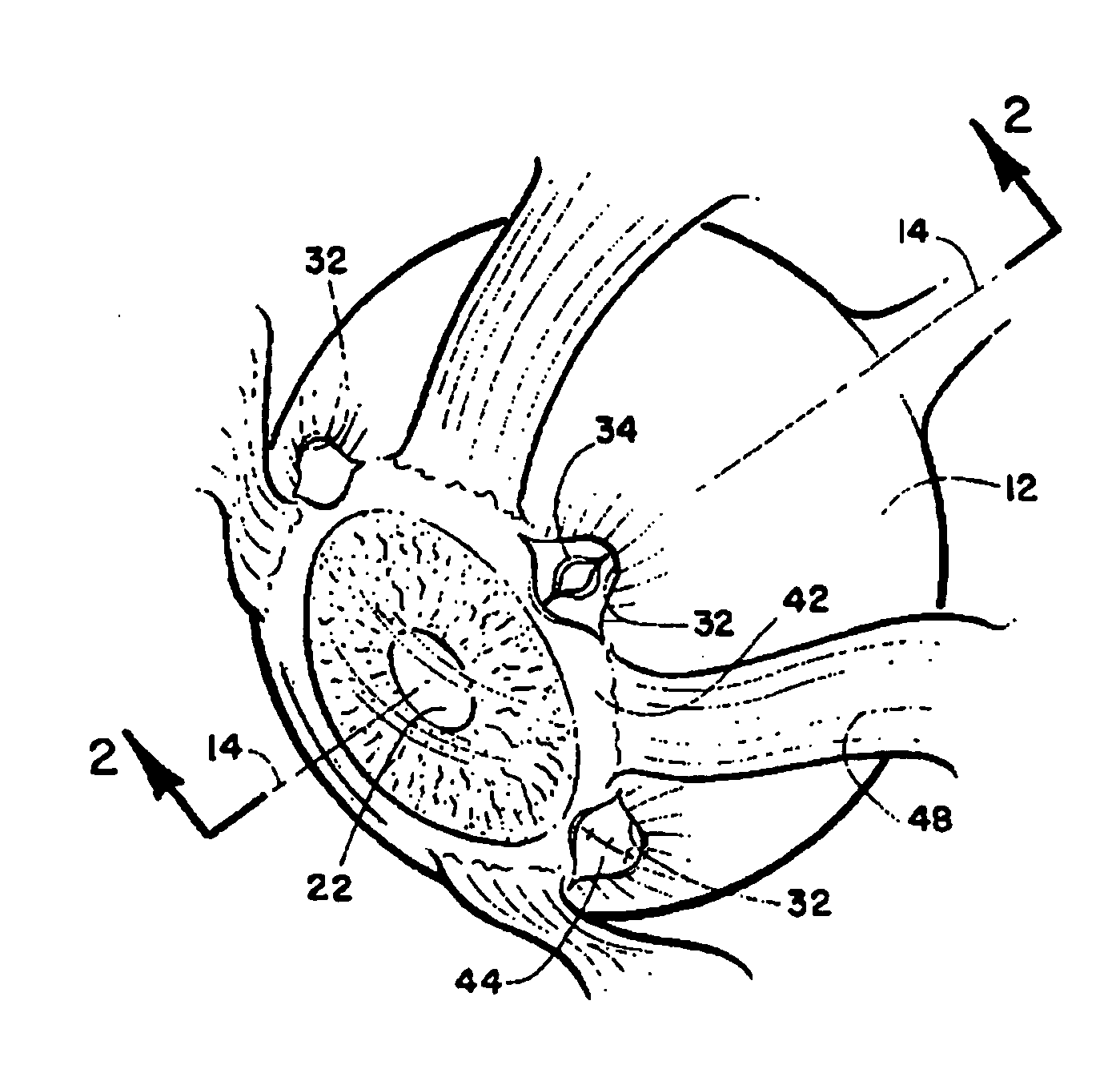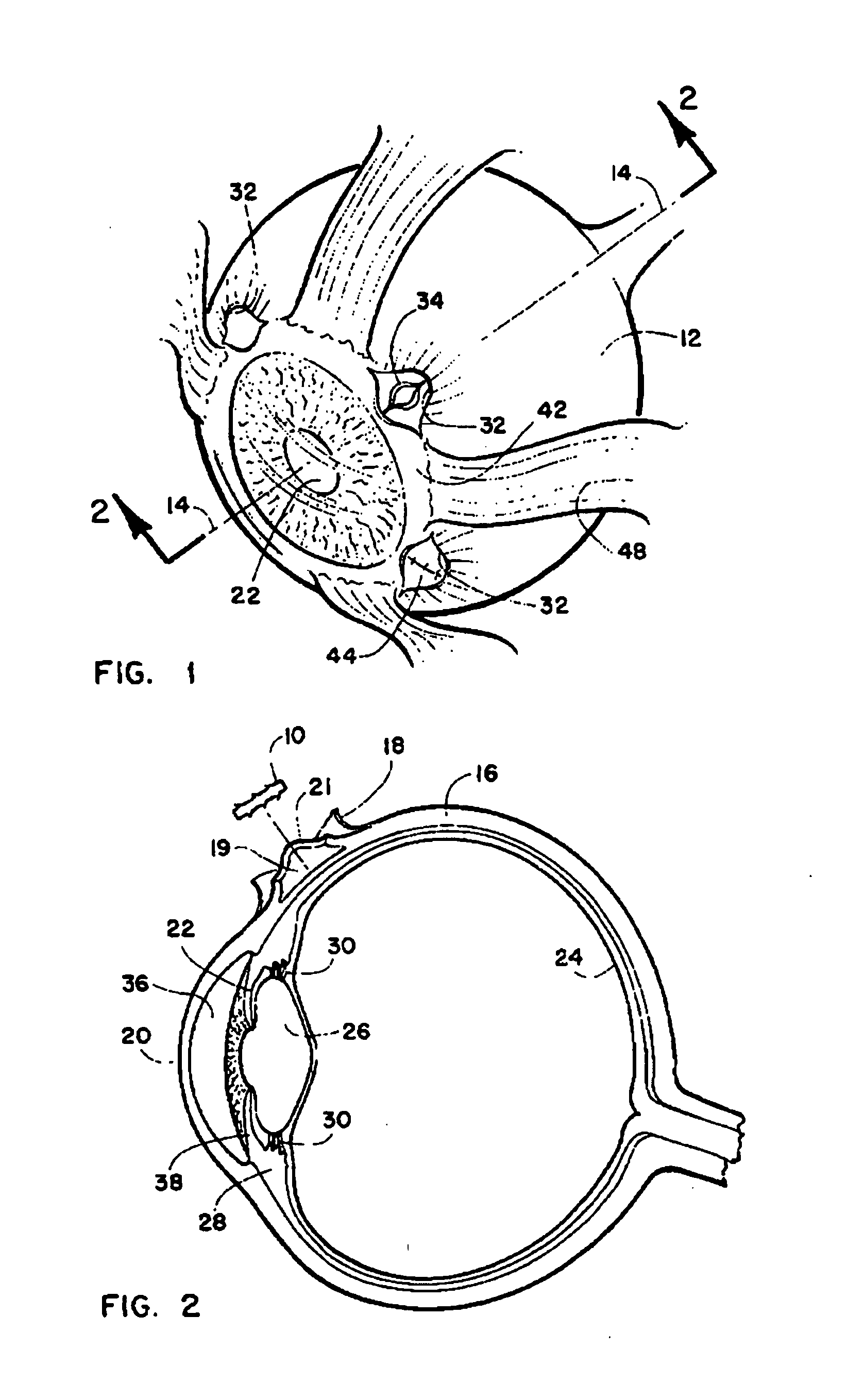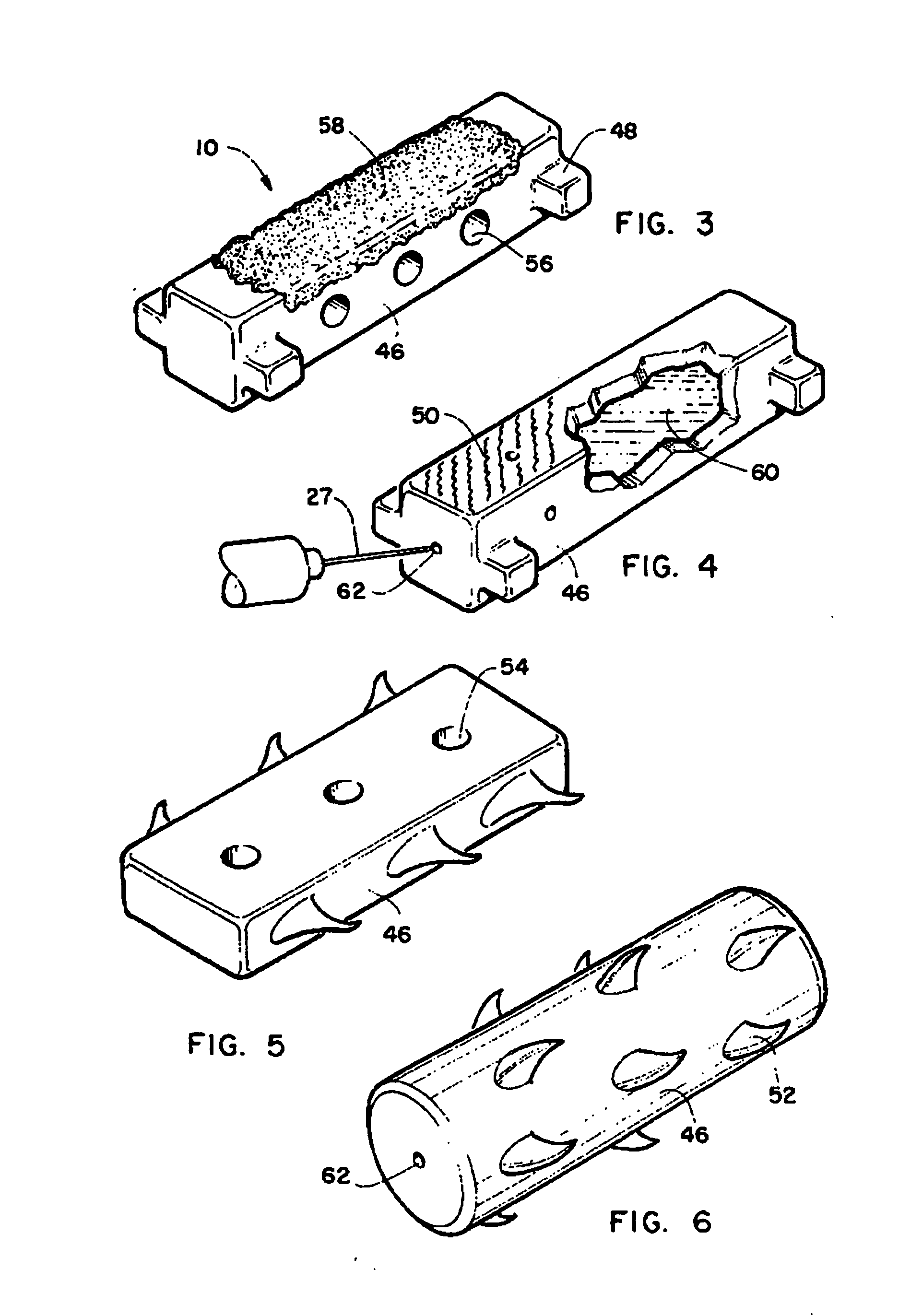Method and intra-sclera implant for treatment of glaucoma and presbyopia
- Summary
- Abstract
- Description
- Claims
- Application Information
AI Technical Summary
Benefits of technology
Problems solved by technology
Method used
Image
Examples
Embodiment Construction
[0055] Referring now to FIGS. 1-18, which in various views depict various preferred embodiments of the disclosed device 10. FIG. 1 depicts the preferred location and steps in the operative method for the placement of the device 10 into the eye 12. The method for surgical insertion of the implant device 10 requires incisions be made radially in the sclera 16 in relation to the cornea 22 and generally in line with the center axis 14 of the eye 12 depicted as running along line 2-2 in FIG. 1.
[0056] In its basic structure the eye 12 consists of a globe having an outer coat, a middle layer and an inner layer. The outer coat is made up of a tough fibrous, white layer—the sclera 16, which communicates with the conjunctiva 18 which is a mucous membrane that lines the inner surfaces of the eyelids and folds back to cover the front surface of the eyeball, except for the central clear portion of the outer eye which is the cornea 20. The middle layer contains pigment and forms the iris 22. The...
PUM
 Login to View More
Login to View More Abstract
Description
Claims
Application Information
 Login to View More
Login to View More - R&D
- Intellectual Property
- Life Sciences
- Materials
- Tech Scout
- Unparalleled Data Quality
- Higher Quality Content
- 60% Fewer Hallucinations
Browse by: Latest US Patents, China's latest patents, Technical Efficacy Thesaurus, Application Domain, Technology Topic, Popular Technical Reports.
© 2025 PatSnap. All rights reserved.Legal|Privacy policy|Modern Slavery Act Transparency Statement|Sitemap|About US| Contact US: help@patsnap.com



